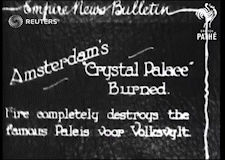Photochrom is a process for producing colorized images from black-and-white photographic negatives via the direct photographic transfer of a negative onto lithographic printing plates. The process is a photographic variant of chromolithography (color lithography).
The process was invented in the 1880s by Hans Jakob Schmid (1856–1924), an employee of the Swiss company Orell Gessner Füssli—a printing firm whose history began in the 16th century. The photochrom process was most popular in the 1890s, when true color photography was first developed but was still commercially impractical.
In 1898 the US Congress passed the Private Mailing Card Act which let private publishers produce postcards. These could be mailed for one cent each, while the letter rate was two cents. Publishers created thousands of photochrom prints, usually of cities or landscapes, and sold them as postcards. In this format, photochrom reproductions became popular.
The Detroit Photographic Company reportedly produced as many as seven million photochrom prints in some years, and ten to thirty thousand different views were offered.
After World War One, which ended the craze for collecting Photochrom postcards, the chief use of the process was for posters and art reproductions. The last Photochrom printer operated up to 1970.
















































